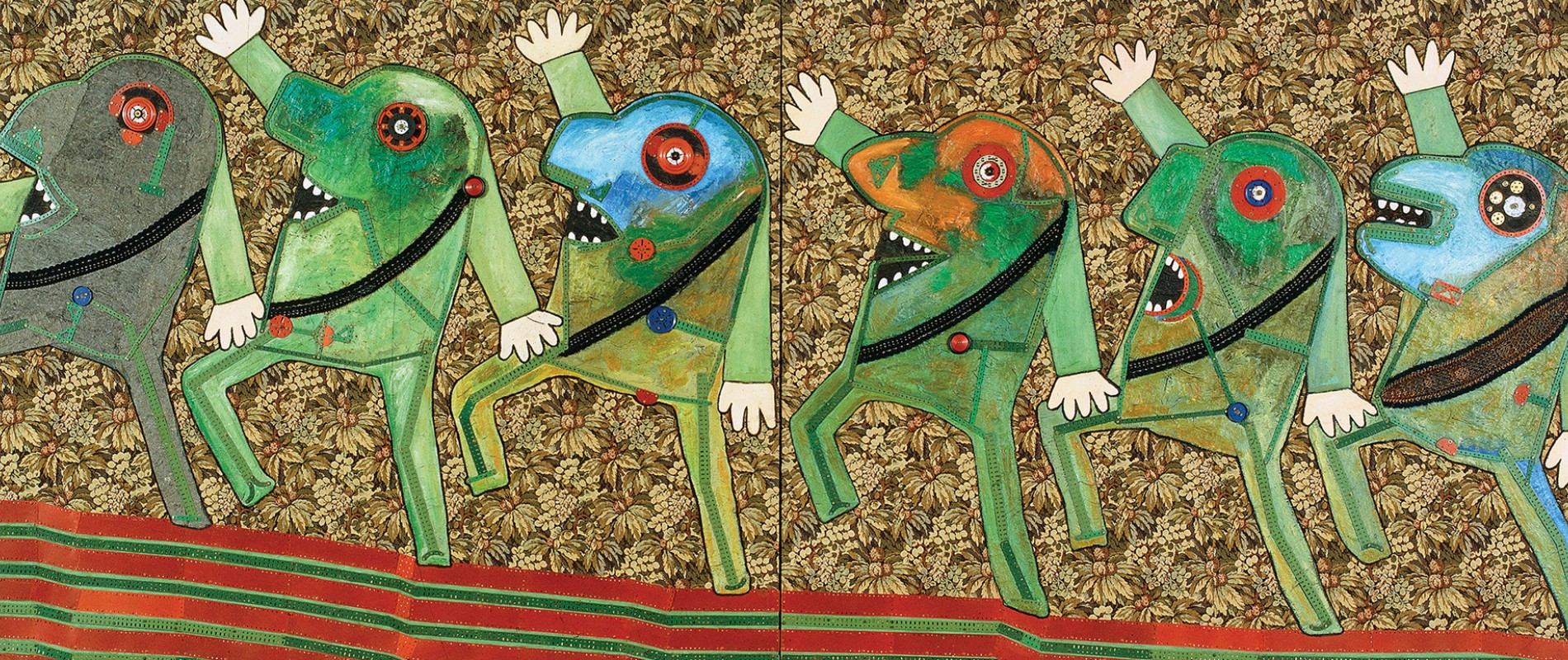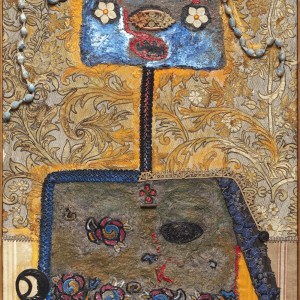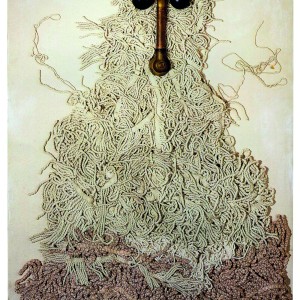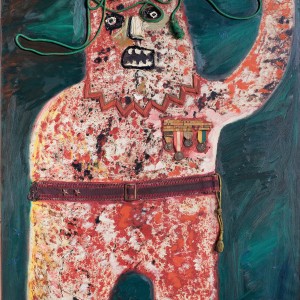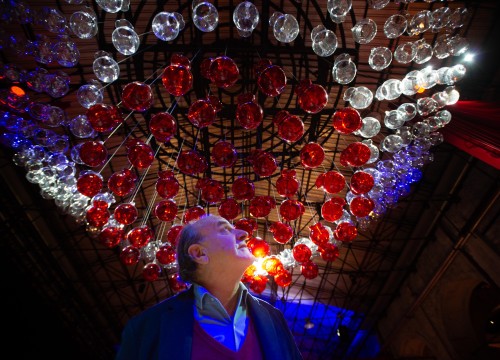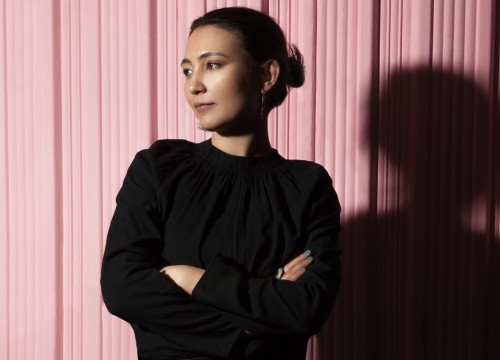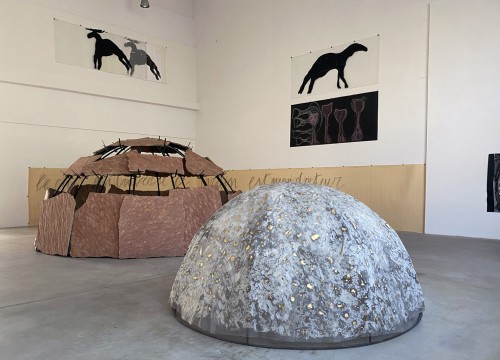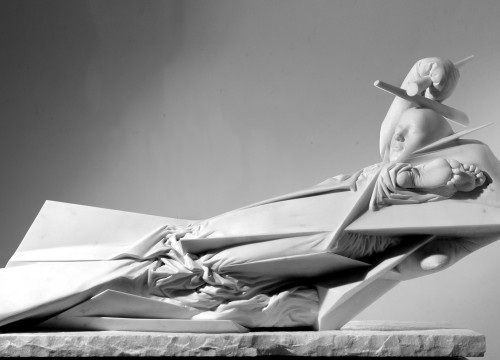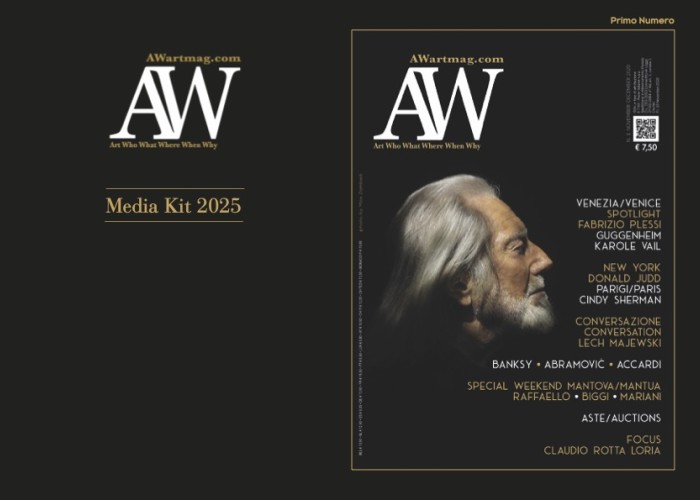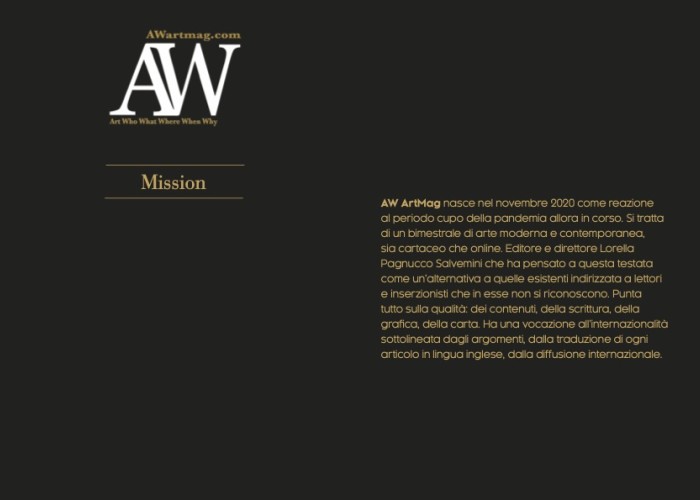On view 50 works to illustrate his long artistic path from the years '50 to the years 2000
Milan celebrates Enrico Baj in the centenary of his birth (he was born in the Lombard capital on October 31st, 1924) with a large retrospective, entitled “BAJ. Baj chez Baj,” held in the Hall of Caryatids of Palazzo Reale until February 9th, 2025, curated by Chiara Gatti and Roberta Cerini Baj (Electa catalogue). This master of the Italian and international avant-garde returns, fifty-two years later, in the same space where he exhibited I funerali dell’anarchico Pinelli (The Funerals of the Anarchist Pinelli), inspired by Picasso’s Guernica hosted there in 1953 and admired, in such a case, by Baj himself.
HE FOUNDED IN 1951 WITH SERGIO DANGELO THE NUCLEAR MOVEMENT, WHICH DEALT WITH THE TOPIC OF THE ATOMIC CATASTROPHE
The current exhibition welcomes visitors to the Lucernario Hall with a scenographic reconstruction of the Apocalisse, which began in 1978 and has since been enriched by stimulating chapters until 2000. It is no coincidence that his Apocalisse in continuous becoming is the introduction to the fifty artworks that distill his personal creative path from the mid-20th century to the dawn of the new millennium. In fact, the nuclear movement, founded together with Sergio Dangelo in 1951, was already addressing the problem of an atomic catastrophe which, in that climate of cold war, risked upsetting humanity. Precisely for this reason, those ectoplasmic figures were born and later evolved into generals, custodians of a sinister power. These found a counterpart in the ladies redundant of ostentatious emptiness.
His stylistic figure the irony, the grotesque, the drama that coexist in his long creative process
Irony, grotesque, and drama coexist and chase each other in the Baj creative path, as shown by the chosen staging for the Hall of Caryatids where works from the nuclear period flow into the pod people before addressing the themes of generals, meccano, furniture, mirrors, the classic ladies, and the hydraulic works of his last season.
In parallel with the Milan exhibition, there is also another exhibition dedicated to Baj's ceramic work at the Museum of Ceramics of Savona, with a section at MUDA (Museo Diffuso Albisola) in Albissola Marina, in the Exhibition Centre, and at Casa Museo Jorn. It is important that the name of Albissola appears in this context: it was here, in 1954, that he met Asger Jorn at the International Ceramic Meetings, conceived by Jorn, which inspired Baj to love the manipulation of earth and the pleasure of new experiments.

